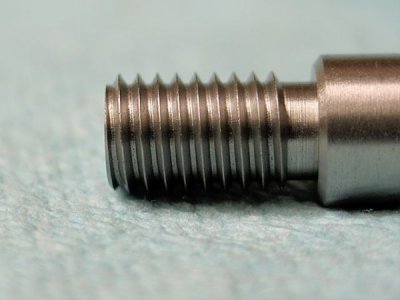
Also it had a great place to lay tooling on the belt cover hinged lid. My biggest gripe with it is that the change gears were very noisy at higher speeds. Hard to beat the looks of the older equipment. I liked most things about it except it's style. It had helical-cut back gears so they ran smooth and quieter than the straight-cut gears on previous lathes at higher speeds. It had a fairly large spindle hole, large tapered roller bearings, QC gears, 2 hp motor, hardened ways and was pretty heavily built. I ended up getting a deal on it, I couldn't pass up. In the 1990's, I worked for a company that had a Jet 12" x 36". I would probably not ever own a sleeve bearing lathe again as a main machine. Was some better but I could never solve the issue to suite me. I made new bronze spindle bearing that fit extremely close. It seemed to most prevalent at higher speeds and when cutting moderate size chips. I adjusted the shimms in the split sleeve spindle bearings many times and couldn't get rid of the issue. The biggest complaint I had was that it had toolbit chatter at times. It did have separate feeds that operated off of the lead-screw keyway. It had a 1-3/4 x 10 spindle thread which was a little odd.

The spindle hole was only slightly larger. Much heavier built than the previous lathes I had.

It didn't really affect what I made so it wasn't a problem for me. The lead-screw became fairly worn where it was used a lot, up near the headstock. All of the power feeds were run off of the half-nuts. The Logan was clearly a better quality lathe. The Atlas had all the same issues as the Logan except it had QC lead screw gearing. The spindle hole was often too small so I ended up using the steady rest and had to often machine out at the end of the lathe bed. It was a 10 x 24 and every now and then it didn't have a big enough swing for something I wanted to do. I started to become annoyed when I had to change them even though it didn't really take that long. I loved that machine but it lacked some features. My first lathe, when I was a kid, back in the late 60's, was a Logan 200. In my various jobs I have used a CVA precision lathe, LeBlonde, Logan, Hardinge, Sharpes, Maximat, Sherline, Levin and various line shaft operated lathes from the 1800's.

A ten-inch lathe is a good compromise size.Īround here the old iron is getting scarce - I think a lot of it is worth more in parts than as an intact machine and SB tens in halfway decent condition are hard to find. The light ten is really a 9-inch bed with higher tailstock and headstock. I think the heavy ten makes a better milling platform than the light ten. If I were to do it over I would get a "heavy" SB ten-inch. The lathe itself was made in 1977.Įven so, the very small stuff was irritating to do on the SB so I bought a Sherline which is kind of dinky and marginal but is nice for some stuff I do using little collets. I got a Palmgren milling attachment for it and for years, before I bought a Clausing vertical mill, did all my milling with it. I settled on a South Bend 10K (light) and that has served me very well for the past 9 or so years. Sometimes that gets awkward on a big lathe. I went thru this a few years ago and there are practical realities that I needed to consider.ĩ9% of my home machining is smaller stuff.


 0 kommentar(er)
0 kommentar(er)
